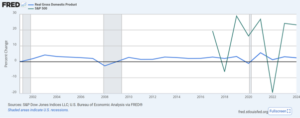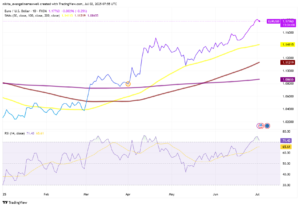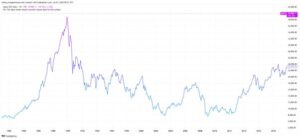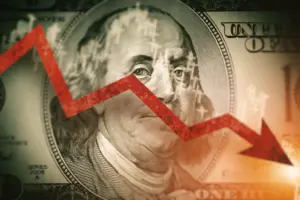Gold prices eased lower in early activity on Tuesday, with traders awaiting the Federal Reserve's decision on interest rates and the key U.S. non-farm payroll report at the end of the week.
Spot gold was trading at $2,425.55 at 04:08 GMT, down 0.24% from the previous level. This is against the stellar performance of the precious metal in the month of August, where the prices touched their record high at $2,531.60 on August 20. The shift in market focus points to the fact that the price performance of gold is now highly dictated by the strength of economic data and decisions of central banks.
Shift in Focus to U.S. Labor Market Report
This places the market's focus on this coming Friday's U.S. non-farm payroll report, expected to be one of the main drivers of expectations for the Federal Reserve monetary policy decisions. The August data is particularly important because it will set up the Fed's possible interest rate action in its September meeting.
Speculators are adjusting positions after recent signals on the economy. The CME FedWatch tool priced the probability of a 25-basis-point rate cut at 69% and has trimmed the likelihood of a more aggressive 50-basis-point cut to 31%. These changes reflect the shifting sentiment of the market about what the Fed is likely to do.
Thin physical Gold Demand
Despite its recent good performance, physical gold demand has been quite lackluster in major Asian markets. Even recent efforts to boost demand in China through new import quotas failed to yield their intended results. This subdued demand underlines a disconnect between gold's performance in the financial markets and its physical demand.
Economic Growth and Dollar Dynamics
Larger economy events, such as the shifting value of the US dollar, intervene in gold market dynamics. Conventionally viewed, gold has been considered a hedge against economic uncertainty and inflation. In the recent period, however, the relationship between gold and dollar has turned more sophisticated.
The dollar strengthens when growth is robust-among other things, it rises above inflation, real interest rates are positive, and the fiscal and current account balances are improving. On the other hand, when markets are in extreme stress and particularly short of liquidity, interest in the dollar as a haven boosts its price as investors seek rock-solid stability.
The dollar is thus expected, at best, to be almost even with minor fluctuations in today's circumstances. While there could be a small decline in the fiscal balance, probably resulting in some downward pressure on the dollar, overall, the impact is likely to remain small.
Likely Impact of Changes in Politics
Political developments, such as a victory of the Republican Party in future elections, could further contribute to US dollar volatility. In the initial stages, the dollar would temporarily gain ground due to the expectation that tighter trade policies and tariffs would achieve a better trade balance, hence be favorable for the dollar's strength.
But this may be a short-term boost only. When the wider economic implications of such policies become clearer, including any resultant inflationary pressures and more rapid interest rate rises than in other countries, the longer-term prospects for the dollar become far more cloudy.
In the "Hard Trump" scenario, with a broad-based use of tariffs imposed, the U.S. and European monetary policy paths may consequently strongly diverge. Such an outcome could easily push the EUR/USD exchange rate below parity. However, once market sentiment normalizes and these policies begin to hurt the economy, the strong dollar that had come from those beginnings may well reverse and introduce a period of pronounced dollar weakness.
Gold as a Hedge and a Speculative Asset
Traditionally, gold was seen as a flight-to-quality asset during periods of economic turmoil. During the past couple of decades, however, the structure of the gold market has changed. For example, the proliferation of gold ETFs has changed some of the traditional roles of gold.
Gold ETFs have turned hold into a more speculative asset, highly vulnerable to investment flows, U.S. dollar movements, and real interest rates. This change in dynamics has turned the gold market less of a safe haven and more of a financial instrument responding to broader economic indicators and investment trends.
Looking Ahead
Until the U.S. non-farm payroll report and the Federal Reserve's interest rate decision, gold price will stay sensitive to economic data and decisions by central banks. The interplay of economic growth, fiscal policies, and monetary decisions would, therefore, remain strong drivers of gold prices and indeed the broad financial markets.
This will be watched very carefully by investors and traders for the prices of gold, which could show there has been a major move if these key economic reports and policy decisions come out. As always, being informed about economic trends and the policies of central banks will become crucial in the constantly changing landscape of the precious-metals market.
For the time being, gold is at a crossroads, and the forthcoming labor market data will definitely serve as a significant cue for the further course of price action.





